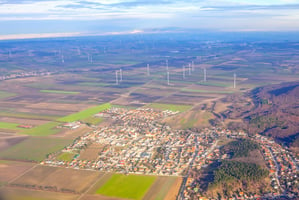Energy Storage Classified as "Essential Service" in COVID 19
April 1, 2020
Alex Morris, CESA Executive Director
With the COVID-19 pandemic, we hope all are safe and well during these unprecedented times.
A challenge for the state of California is that protocols for shelter-in-place are changing quickly, and we’re seeing county level protocols that can often exceed state ones.
Here is some ‘need-to-know’ information to support your decisions about keeping workers in the field in California:
The main takeaway, as we read it and as of today (4/1/20), is that energy storage development and construction has qualified to date as ‘essential’ (per the Gov’s Order), but newer orders coming out at county levels in recent days seem more restrictive so be sure to check the county or city rules too.
Background:
On March 19, Governor Newsom issued Executive Order N-33-20 directing all resident to immediately heed current State public health directives to stay home, except as needed to maintain continuity of operations essential to criticalinfrastructure sectors (summary from March 22). You’ll see that the energy sector is specifically called out, along with construction duties for various roles as called out in “Other Community-Based Government Operations and Essential Functions” section. More updates may be noticed here: https://covid19.ca.gov/stay-home-except-for-essential-needs/.
Energy Sector:
The Energy Sector consists of widely-diverse and geographically-dispersed critical assets and systems that are often interdependent of one another. This critical infrastructure is divided into three interrelated segments or subsectors—electricity, oil, and natural gas—to include the production, refining, storage, and distribution of oil, gas, and electric power, except for hydroelectric and commercial nuclear power facilities and pipelines. The Energy Sector supplies fuels to the transportation industry, electricity to households and businesses, and other sources of energy that are integral to growth and production across the Nation. In turn, it depends on the Nation’s transportation, information technology, communications, finance, water, and government infrastructures.
Essential Workforce - Electricity industry:
-
Workers who maintain, ensure, or restore the generation, transmission, and distribution of electric power, including call centers, utility workers, reliability engineers and fleet maintenance technicians
-
Workers needed for safe and secure operations at nuclear generation
-
Workers at generation, transmission, and electric blackstart facilities
-
Workers at Reliability Coordinator (RC), Balancing Authorities (BA), and primary and backup Control Centers (CC), including but not limited to independent system operators, regional transmission organizations, and balancing authorities
-
Mutual assistance personnel
-
IT and OT technology staff – for EMS (Energy Management Systems) and Supervisory Control and Data Acquisition (SCADA) systems, and utility data centers; Cybersecurity engineers; cybersecurity risk management
-
Vegetation management crews and traffic workers who support
-
Environmental remediation/monitoring technicians
-
Instrumentation, protection, and control technicians
OTHER COMMUNITY-BASED GOVERNMENT OPERATIONS AND ESSENTIAL FUNCTIONS
Essential Workforce (Excerpted)
-
Construction Workers who support the construction, operation, inspection, and maintenance of construction sites and construction projects (including housing construction
-
Workers such as plumbers, electricians, exterminators, and other service providers who provide services that are necessary to maintaining the safety, sanitation, construction material sources, and essential operation of construction sites and construction projects (including those that support such projects to ensure the availability of needed facilities, transportation, energy and communications; and support to ensure the effective removal, storage, and disposal of solid waste and hazardous waste)
COUNTY ISSUES:
Separately, many counties have issued updated information with more stringent shelter in place provisions:
-
6 Bay Area Counties (Alameda, Contra Costa, Marin, San Francisco, San Mateo, and Santa Clara) and the City of Berkeley extended shelter in place until at least May 1 and included some more stringent provisions, as we understand it.
-
Santa Clara and others specifically note that most construction is prohibited, though this appears to be about housing/building construction.
It may be that the Governor will update State-level guidance on these matters soon. We wish you well in these unprecedented times are remain available to support you however we can.



